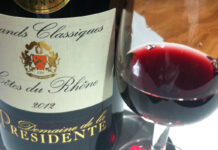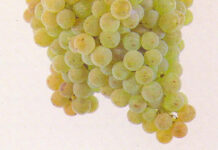Luke Richardson is a sommelier who has worked in a range of venues across the UK in a career spanning more than 20 years. In his column for SLTN he shares his thoughts on all things wine-related and answers your questions about wine. If you have a question for Luke email it to sltn@peeblesmedia.com

Hello again!
As we finally come out of the restrictions imposed upon our trade because of the dreaded virus, I thought it was a good time to talk about some sparkling wines – spring has sprung, summer is coming and hopefully we can get into a new normal with a celebratory glass of fizz.
I’m going to swerve around Champagne and, indeed, France altogether, and talk about the wonderful sparkling wines from Italy.
Firstly, Prosecco – the hugely successful sparkling wines based on the Glera grape variety. The best examples come from the Conegliano Valdobbiadene sub-region of Treviso just north of Venice and are produced under the highest level of classification available in Italian wine – DOCG (Denominazione di origine Controllata e Garantia). Only Prosecco Superiore is produced here and this guarantees that the wine will be sparkling (Spumante) as opposed to semi-sparkling (Frizzante).
This is important for two reasons – firstly, as there is more fizz, the wine stays sparkling for much longer and this helps you to waste less. Secondly, although they cost a bit more, they are tangibly higher quality and can carry the premium.
Flavour profiles can differ wildly here, but in my experience it’s the ones with soft fleshy stone fruit that are the most popular – think juicy pears or soft yellow apples. The very fresh and lean styles, whilst possibly great quality, are more austere and I feel the average Prosecco drinker wants a bit of fruit and an easily-accessible flavour profile! Expect to pay around £9-£11 plus VAT.
Whilst still in Italy, and maybe more one for by the bottle rather than by the glass, I’d like to mention Moscato D’Asti. Produced around the town of Asti in Piedmont, north west Italy, this IS a Frizzante wine (hence the recommendation for by the bottle sales only) and it also carries a bit of residual sugar – think cooked Granny Smith apples and a playful spritz. It is a very heady wine, normally quite low in alcohol and should be served as cold as possible; it is great as an aperitif or with some lighter desserts – in fact, a bowl of fresh strawberries and a cold glass of Moscato D’Asti is a wonderful combination. The wine has fallen out of favour in recent years, but as the low-alcohol category is becoming more and more popular, I think it’s a great wine to have on your lists. It can be as little as £7 plus VAT up to about £11-plus.
Lastly, Franciacorta – the king of Italian sparkling wines. Easily of comparable quality to Champagne, these are really amongst the top sparkling wines on the planet. Permitted grape varieties are Chardonnay, Pinot Bianco and Pinot Nero. There is a non-vintage (NV) option, but I would definitely recommend spending the extra and getting the vintage. Vintage wines must be aged at least 37 months before release, of which 30 of those months must be in contact with the yeasts and lees, giving more texture. Expect to pay roughly the same as Champagne. Happy fizzing!
























